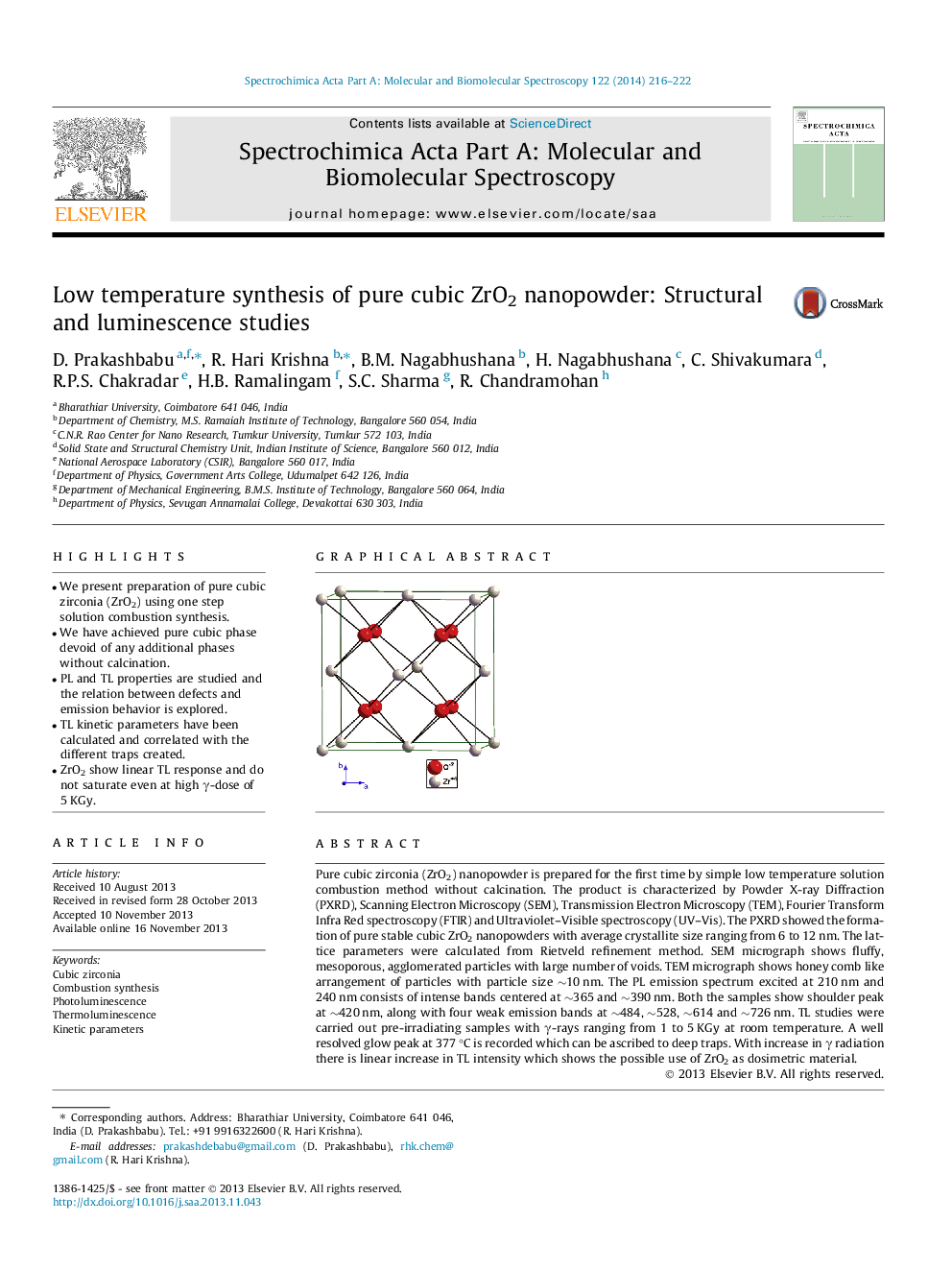| Article ID | Journal | Published Year | Pages | File Type |
|---|---|---|---|---|
| 1230238 | Spectrochimica Acta Part A: Molecular and Biomolecular Spectroscopy | 2014 | 7 Pages |
•We present preparation of pure cubic zirconia (ZrO2) using one step solution combustion synthesis.•We have achieved pure cubic phase devoid of any additional phases without calcination.•PL and TL properties are studied and the relation between defects and emission behavior is explored.•TL kinetic parameters have been calculated and correlated with the different traps created.•ZrO2 show linear TL response and do not saturate even at high γ-dose of 5 KGy.
Pure cubic zirconia (ZrO2) nanopowder is prepared for the first time by simple low temperature solution combustion method without calcination. The product is characterized by Powder X-ray Diffraction (PXRD), Scanning Electron Microscopy (SEM), Transmission Electron Microscopy (TEM), Fourier Transform Infra Red spectroscopy (FTIR) and Ultraviolet–Visible spectroscopy (UV–Vis). The PXRD showed the formation of pure stable cubic ZrO2 nanopowders with average crystallite size ranging from 6 to 12 nm. The lattice parameters were calculated from Rietveld refinement method. SEM micrograph shows fluffy, mesoporous, agglomerated particles with large number of voids. TEM micrograph shows honey comb like arrangement of particles with particle size ∼10 nm. The PL emission spectrum excited at 210 nm and 240 nm consists of intense bands centered at ∼365 and ∼390 nm. Both the samples show shoulder peak at ∼420 nm, along with four weak emission bands at ∼484, ∼528, ∼614 and ∼726 nm. TL studies were carried out pre-irradiating samples with γ-rays ranging from 1 to 5 KGy at room temperature. A well resolved glow peak at 377 °C is recorded which can be ascribed to deep traps. With increase in γ radiation there is linear increase in TL intensity which shows the possible use of ZrO2 as dosimetric material.
Graphical abstractFigure optionsDownload full-size imageDownload as PowerPoint slide
